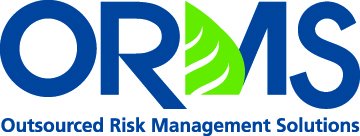Storage Tanks Present a “HOT” Environmental Risk
PFAS Contamination Can Lead to a Sticky Environmental Situation
August 5, 2019Avoid a Fright With the 5 Most Common Environmental Reviews
October 31, 2019Storage Tanks Present a “HOT” Environmental Risk
Underground storage tanks (USTs) and heating oil tanks (HOTs) present unique and challenging environmental risks for both commercial and residential property owners, as well as lenders. Years ago, these popular storage vessels were virtually unregulated, and the resultant leaks caused untold environmental damage.
In recent years, federal and state rules have tightened around USTs (and to a lesser extent HOTs), and lenders should pay close attention to the types and level of due diligence that should be performed. The U.S. Environmental Protection Agency (EPA) estimates there are currently roughly 549,000 active USTs containing hazardous petroleum and other substances nationwide.
Here’s what you need to know:
Tanks present significant risks
Heating oil and underground storage tanks present numerous potential environmental, compliance, and economic risks for property owners. The largest environmental threat stems from the possible leaking of petroleum or other hazardous substances from aging and corroded metal tanks into groundwater, which can, in turn, contaminate local municipal and residential drinking water supplies. Underground and above-ground tanks may also release hazardous substances into the soil.
The cost of removing a damaged heating oil tank runs around $2,000. However, if soil remediation is necessary, the potential costs rise to $20,000 – 50,000. If the oil has leaked into the groundwater, the cleanup expense may reach $100,000 or greater.[1] It’s also important to note that tank spills are often not covered by standard homeowners or commercial insurance policies.
Due to emerging environmental risks, in June 2015 the U.S. EPA significantly updated and strengthened its 1988 rule for USTs containing petroleum-based products (40 CFR part 280). The new rule contains several additions, including:
- Secondary containment requirements for new and replaced tanks and piping;
- New operator training requirements;
- Periodic operation and maintenance requirements for UST systems; and
- Requirements to ensure UST system compatibility before storing certain biofuel blends.
In addition, the rule removed past deferrals for emergency generator tanks, field-constructed tanks, and airport hydrant systems, updated codes of practice, and included some editorial and technical corrections.
You should also familiarize yourself with how your state handles UST compliance, which varies considerably. For a comprehensive state-by-state listing of the latest HOT and UST regulations, visit Source Fueling Equipment Solutions’ website.
Best practices in UST and HOT due diligence
As a lender, the specific scenario determines the level of due diligence you should require from your borrower to ensure there is no risk of contamination from a UST or HOT.
First, if your Phase I uncovers any history of above- or underground petroleum or heating oil storage tanks on the subject property, you should conduct further investigation. This includes obtaining any and all available documentation from tank removals, testing, or other related actions. If you are unable to locate or obtain any additional information, you may need to require completion of a Phase II prior to closing.
If the property currently contains an aboveground heating oil tank, retain an experienced environmental consultant to conduct a thorough visual inspection. Make sure to request detailed photos for the credit file!
In some jurisdictions, local firefighters conduct heating oil tanks inspections. However, it’s important to recognize that such inspections, if not accompanied by lab testing data confirming there wasn’t a leak, do not constitute proof. A potential lender or buyer of the property may wish to conduct further testing and obtain proper documentation for peace of mind. Check with your environmental consultant to determine what your local and state authorities require.
Lastly, if a property owner decides to close a UST system, they must follow proper EPA guidance, which states that all UST systems in use on or after December 22, 1998 must meet the closure requirements at 40 CFR 280.70. If the environmental report confirms the former presence of an underground storage tank that was subsequently removed, you must obtain validation that it was removed properly, prior to closing. Don’t rely SOLELY on so-called “closure reports” – these vary in quality and can be notoriously unreliable.
As a lender, you are ultimately responsible for any
potential environmental hazards on the properties securing your commercial
loans. Storage tanks present a unique challenge, and you and your borrower would
be well-served to fully understand the risks and requirements associated with
them. In addition, you will both benefit
by burying any potential tank issues in the “grave.”
[1] “Environmental Liability: Managing Environmental Risks in Corporate, Real Estate and Brownfield Transactions” by Larry Schnapf, published by Lexis Law Publishing.
